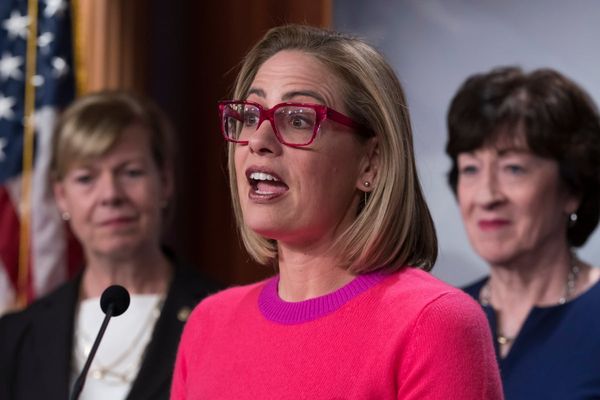
The Victorian government has ruled out converting a swathe of residential properties it owns on a rail corridor in Melbourne’s south-east into public housing, despite calls from advocates to use the land to help vulnerable people.
About 44 homes, townhouses and apartments in Carnegie and Murrumbeena, which the government acquired during level crossing removal works, are being prepared for future sale, according to the Department of Treasury and Finance website.
A spokesperson for the Victorian government confirmed the properties –and others acquired during the removal of nine level crossings between Caulfield and Dandenong – would be sold.
“With a direct connection to the new Metro Tunnel due to open in 2025 and the additional housing options we’re providing in the area, Carnegie will increasingly cement itself as an attractive location for homebuyers,” the spokesperson said.
But as Victoria’s social housing waitlist grows, the government has been urged to reconsider.
“We know there is an urgent need for homes for thousands of vulnerable Victorians who are currently living in desperate circumstances,” said Emma King, the chief executive of the Victorian Council of Social Service.
“Having 44 properties that can be invested in social housing, that are close to public transport, jobs and community services, presents a fantastic opportunity.”
The Council to Homeless Persons’s chief executive, Deborah Di Natale, said the government should “use every opportunity to boost public housing, especially in areas close to public transport and jobs”.
Kerrie Byrne, a spokesperson for Save Public Housing Collective, agreed.
“It makes no sense for the state government to be selling these properties when they could have been used for tenants forced to relocate from the Barak Beacon estate in Port Melbourne, due to its planned redevelopment,” Byrne said. “Instead, many expensive properties were bought or leased for those tenants.”
Research from the RMIT’s Urban Research Institute, published in 2020, found that successive governments had “wasted decades of opportunities to address the state’s housing crisis” by selling land that could have been used for housing. They found an estimated 11,000 public housing units could have been built.
Prof Libby Porter, who worked on the study, said using the 44 government-owned properties for public housing was a “no-brainer”.
“It seems a terrible waste to at least not be having a public conversation about how we use those kinds of assets,” Porter said.
She said this was exacerbated by a lack of transparency and accountability checks and balances on how those government assets were used.
“Collectively, what do we own? And what resources do we have? And how can we use that in the current context to achieve housing justice? These are basic questions that we really should be asking” Porter said.
A KPMG urban economist, Terry Rawnsley, said while properties unsuitable for redevelopment should be converted to social or affordable housing, the government should also consider opportunities for medium-density development.
“These are the prime kind of suburbs where you do want to see greater densities,” he said.
While there was “no silver bullet” to fix the growing housing affordability crisis, Rawnsley said an increase in development in established suburbs would help.
A KPMG study released this year found greater Melbourne produced 565,000 additional homes between 2006 and 2021, though only 35% were located within a kilometre of a train station.
Last week the premier, Daniel Andrews, said the government’s “housing statement” to be released in the coming months, would seek to address this imbalance.
“We can keep on adding suburb after suburb after suburb … or we can consolidate more and more housing, with very high design standards, so that people can live closer to public transport,” he said.
One option being floated by the government is to take statutory planning powers away from local government, particularly near rail corridors. The government spokesperson said the state needed “a network of residential and employment hubs” and reforms would be announced later in the year
“[This] is why we’re focused on increasing housing supply in places with easy connections to existing transport and enormous potential for good local jobs.”







